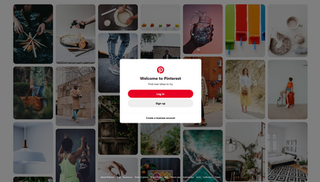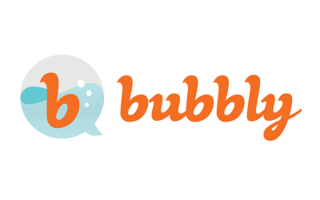
LinkedIn is a business and employment-focused social media platform that works through websites and mobile apps. It was launched on May 5, 2003. Since December 2016, it has been a wholly owned subsidiary of Microsoft. The platform is primarily used for professional networking and career development, and allows jobseekers to post their CVs and employers to post jobs. From 2015 most of the company's revenue came from selling access to information about its members to recruiters and sales professionals. LinkedIn has more than 970 million registered members from over 200 countries and territories.
Online advertising, also known as online marketing, Internet advertising, digital advertising or web advertising, is a form of marketing and advertising which uses the Internet to promote products and services to audiences and platform users. Online advertising includes email marketing, search engine marketing (SEM), social media marketing, many types of display advertising, and mobile advertising. Advertisements are increasingly being delivered via automated software systems operating across multiple websites, media services and platforms, known as programmatic advertising.

Meebo was an instant messaging and social networking service provider. It was founded in September 2005 by Sandy Jen, Seth Sternberg, and Elaine Wherry, and was based in Mountain View, California. Initially the company offered a web-based instant messenger service, extending its offer in more general online chat and even social networking directions. In June 2012, Google acquired Meebo to merge the company's staff with the Google+ developers team.

Facebook is a social media and social networking service owned by American technology conglomerate Meta Platforms. Created in 2004 by Mark Zuckerberg with four other Harvard College students and roommates Eduardo Saverin, Andrew McCollum, Dustin Moskovitz, and Chris Hughes, its name derives from the face book directories often given to American university students. Membership was initially limited to Harvard students, gradually expanding to other North American universities. Since 2006, Facebook allows everyone to register from 13 years old, except in the case of a handful of nations, where the age limit is 14 years. As of December 2022, Facebook claimed 3 billion monthly active users. As of October 2023 Facebook ranked as the 3rd most visited website in the world with 22.56% of its traffic coming from the United States. It was the most downloaded mobile app of the 2010s.
Social television is the union of television and social media. Millions of people now share their TV experience with other viewers on social media such as Twitter and Facebook using smartphones and tablets. TV networks and rights holders are increasingly sharing video clips on social platforms to monetise engagement and drive tune-in.
Social network advertising, also known as "social media targeting," is a group of terms that are used to describe forms of online advertising and digital marketing that focus on social networking services. One of the significant benefits of this type of advertising is that advertisers can take advantage of the users' demographic information, psychographics and other data points to target their ads appropriately.

Facebook is a social networking service originally launched as TheFacebook on February 4, 2004, before changing its name to simply Facebook in August 2005. It was founded by Mark Zuckerberg and college roommates and fellow Harvard University students, in particular Eduardo Saverin, Andrew McCollum, Dustin Moskovitz, and Chris Hughes. The website's membership was initially limited by the founders to Harvard students, but was expanded to other colleges in the Boston area, the Ivy League, and gradually most universities in the United States and Canada, corporations, and by September 2006, to everyone with a valid email address along with an age requirement of being 13 or older.

Instagram is an American photo and video sharing social networking service owned by Meta Platforms. It allows users to upload media that can be edited with filters, be organized by hashtags, and be associated with a location via geographical tagging. Posts can be shared publicly or with preapproved followers. Users can browse other users' content by tags and locations, view trending content, like photos, and follow other users to add their content to a personal feed. A Meta-operated image-centric social networking service, it is available on iOS, Android, Windows 10, and the web. Users can take photos and edit them using built-in filters and other tools, then share them on other social media platforms like Facebook. It supports 25 languages including English, Spanish, French, Korean, and Japanese.
InMobi is an Indian multinational technology company, based in Bengaluru, India. Its mobile-first platform allows brands, developers and publishers to engage consumers through contextual mobile advertising. The company was founded in 2007 under the name mKhoj by Naveen Tewari, Mohit Saxena, Amit Gupta and Abhay Singhal.

Pinterest is an American image sharing and social media service designed to enable saving and discovery of information like recipes, home, style, motivation, and inspiration on the internet using images and, on a smaller scale, animated GIFs and videos, in the form of pinboards. Created by Ben Silbermann, Paul Sciarra, and Evan Sharp, Pinterest, Inc. is headquartered in San Francisco.

An interest graph is an online representation of the specific things in which an individual is interested. Interest graphs have perceived utility and value because of the premise that people's interests are a major aspect of who they are, forming part of their personal identity, and can be used as indicators of such things as what they might want to do or buy, where they might want to go, or who they might want to meet, follow or vote for.
John Manoogian III is an American Internet entrepreneur, software engineer, digital designer, public speaker, and teacher. Manoogian co-founded social technology company 140 Proof in 2009 and is recognized for practicing a "hybrid" or blended approach to design and software development. He graduated from the University of Michigan and is based in San Francisco.

News360 was a personalized news aggregation app for smartphones, tablets and the web. It attempted to learn a user's interests by analyzing their interaction with news stories on the app and using semantic analysis and natural language processing to create an Interest Graph and construct a unique feed of relevant content for each user. The app claims an audience of more than 4 million users.
Tapad Inc. is a venture-funded startup company based in New York City that develops and markets software and services for cross-device advertising and content delivery. It uses algorithms to analyze internet and device data and predict whether two or more devices are owned by the same person. Participating websites and apps then cater their advertisements based on a collective knowledge of the user's actions across all of their devices.

Bubbly is a social voice service working across feature phones and smartphones. For feature phones, users can record their voice by dialling a short code and speaking, as well as listen to popular posts. Subscribers get a text with the short code number for dialling into Bubbly's servers to have the voice message play back. To cater to smartphone users, Bubbly was made available on iOS and Android platforms in April 2012.
Flurry is an American mobile analytics, monetization, and advertising company founded in 2005. The company develops and markets a platform for analyzing consumer interactions with mobile applications, packages for marketers to advertise in-apps, as well as a service for applying monetization structures to mobile apps. Flurry analyzes 150 billion app sessions per month. The company's analytics platform tracks application sessions in iOS, Android, HTML5, and JavaME platforms. Flurry has raised a total of $65 million in funding since its founding and in March 2014 announced that it would partner with Research Now to create a panel database on mobile users. Flurry was acquired by Yahoo! on July 21, 2014 for somewhere between $200 and $300 million.
This is a timeline of Pinterest, an Internet service that serves as a "visual discovery tool", as well as the eponymous company.
Deeplink is the developer of deeplink.me, a deep linking platform that drives URLs to content within mobile apps.








